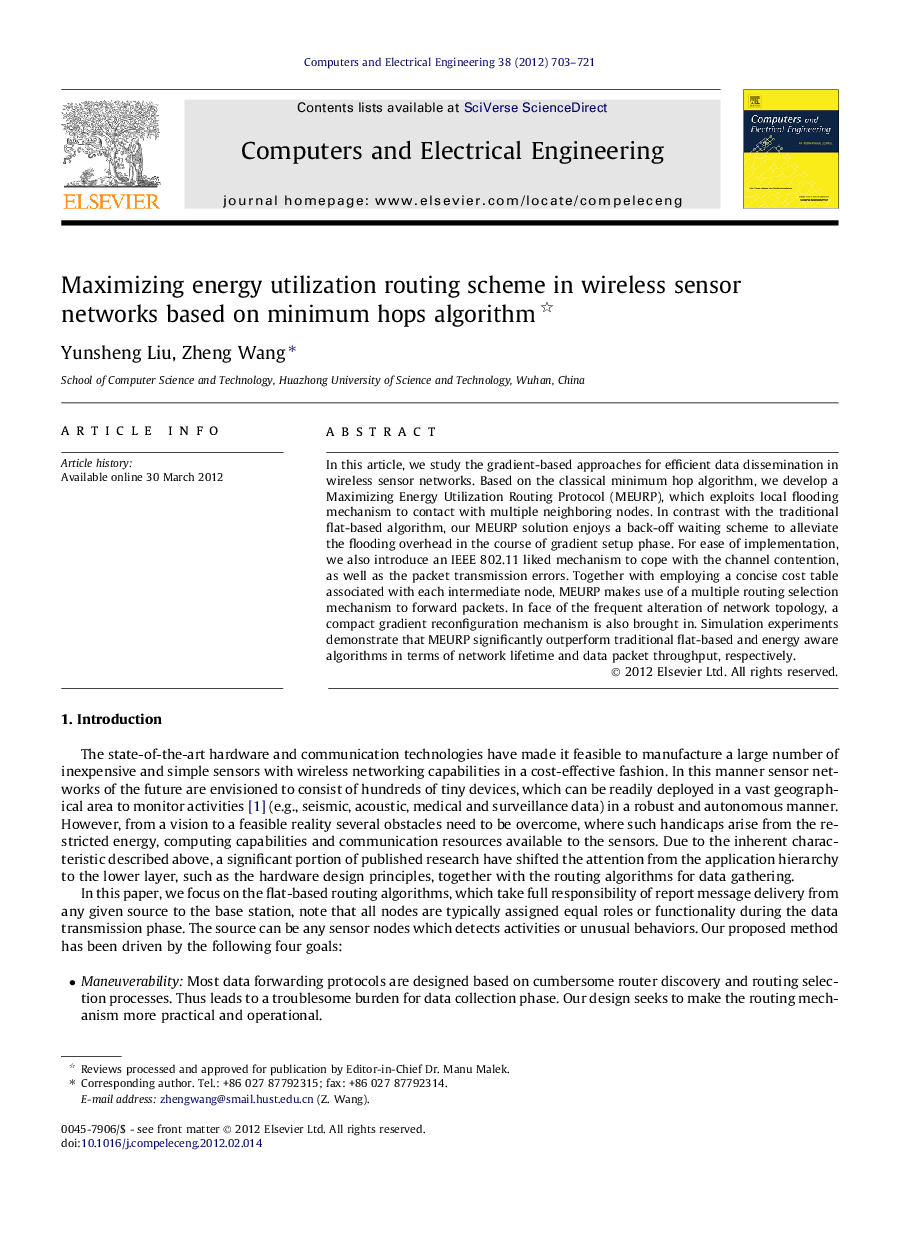| کد مقاله | کد نشریه | سال انتشار | مقاله انگلیسی | نسخه تمام متن |
|---|---|---|---|---|
| 455449 | 695370 | 2012 | 19 صفحه PDF | دانلود رایگان |

In this article, we study the gradient-based approaches for efficient data dissemination in wireless sensor networks. Based on the classical minimum hop algorithm, we develop a Maximizing Energy Utilization Routing Protocol (MEURP), which exploits local flooding mechanism to contact with multiple neighboring nodes. In contrast with the traditional flat-based algorithm, our MEURP solution enjoys a back-off waiting scheme to alleviate the flooding overhead in the course of gradient setup phase. For ease of implementation, we also introduce an IEEE 802.11 liked mechanism to cope with the channel contention, as well as the packet transmission errors. Together with employing a concise cost table associated with each intermediate node, MEURP makes use of a multiple routing selection mechanism to forward packets. In face of the frequent alteration of network topology, a compact gradient reconfiguration mechanism is also brought in. Simulation experiments demonstrate that MEURP significantly outperform traditional flat-based and energy aware algorithms in terms of network lifetime and data packet throughput, respectively.
Figure optionsDownload as PowerPoint slideHighlights
► We model a back-off waiting scheme to alleviate the flooding overhead.
► We present an IEEE 801.11 liked MAC protocol to cope with the channel contention.
► A table driven routing method and a rotation forwarding mechanism is involved.
► We report a self-reconfigure phase to hold the robustness of the sensor networks.
Journal: Computers & Electrical Engineering - Volume 38, Issue 3, May 2012, Pages 703–721